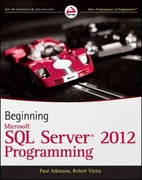Answered step by step
Verified Expert Solution
Question
1 Approved Answer
to handle routing replies ( RREP ) , errors ( RERR ) , topology control ( TC ) , MPT , and neighbor discovery according
to handle routing replies RREP errors RERR topology control TC MPT and neighbor discovery according to your hybrid routing protocol specifications. Writ eme code of itPrevious code
Function to send a specified number of hybrid RREQ packets
void SendHybridRREQPtr source, IpvAddress destAddress, uintt numPackets
for uintt i ; i numPackets; i
CustomAODVRouteRequestsource destAddress;
Function to measure PDR EED throughput, and routing overhead
void MeasurePerformanceuintt numNodes, uintt numPackets
Your measurement logic goes here
Perform simulations with different numbers of nodes and packets
int main
Previous code
Send hybrid RREQ packets for nodes
for uintt numNodes :
NodeContainer nodes;
nodes.CreatenumNodes;
Rest of the setup logic
Send hybrid RREQ packets
IpvAddress destAddress;
SendHybridRREQnodesGet destAddress, ;
SendHybridRREQnodesGet destAddress, ;
SendHybridRREQnodesGet destAddress, ;
Run simulation, measure performance, etc.
Perform additional simulations and measurements as requested
MeasurePerformance;
MeasurePerformance;
MeasurePerformance;
MeasurePerformance;
MeasurePerformance;
MeasurePerformance;
Rest of the main function
b#include
ns
core
module.h
#include
ns
network
module.h
#include
ns
mobility
module.h
#include
ns
internet
module.h
#include
ns
applications
module.h
#include
ns
aodv
module.h
#include
ns
olsr
module.h
using namespace ns
;
enum RoutingProtocol
AODV OLSR, HYBRID
;
struct RouteEntry
Ipv
Address dest;
Ipv
Address nextHop;
RoutingProtocol protocol;
RouteEntry
Ipv
Address dest, Ipv
Address nextHop, RoutingProtocol protocol
: dest
dest
nextHop
nextHop
protocol
protocol
;
std::vector routingTable;
bool IsAODVZone
Ptr node
Placeholder logic for AODV zone determination
return false;
void CustomAODVRouteRequest
Ptr source, Ipv
Address destAddress
Ptr packet
Create
;
Ipv
Header ipvHeader;
ipvHeader.SetSource
source
GetObject
GetAddress
GetLocal
;
ipvHeader.SetDestination
destAddress
;
packet
AddHeader
ipvHeader
;
packet
AddHeader
AodvHeader
;
source
Send
packet
;
void CustomAODVRouteReply
Ptr node, RouteEntry route
Ptr reply
Create
;
reply
AddHeader
route
;
node
Send
reply
;
void HybridRoutingLogic
Ptr node, Ipv
Address destAddress
if
IsAODVZone
node
CustomAODVRouteRequest
node
destAddress
;
else
Placeholder for OLSR logic
You can implement your OLSR routing logic here
For simplicity, this example does not include detailed OLSR logic
For now, let's assume OLSR does nothing
class PacketMonitor
public:
PacketMonitor
: lostPackets
void CheckForLostPackets
Ptr packet
if
packet
Received
lostPackets
;
int GetLostPackets
return lostPackets;
private:
int lostPackets;
;
int main
NodeContainer nodes;
nodes.Create
;
MobilityHelper mobility;
mobility.SetMobilityModel
ns
::RandomWalk
dMobilityModel",
"MinSpeed", StringValue
"MaxSpeed", StringValue
;
mobility.Install
nodes
;
InternetStackHelper internet;
internet.Install
nodes
;
AodvHelper aodv;
OlsrHelper olsr;
Ipv
StaticRoutingHelper staticRouting;
Ipv
AddressHelper address;
RoutingProtocol currentProtocol
AODV;
PacketMonitor monitor;
Ipv
Address destAddress
;
Assign IP addresses
address.SetBase
;
Ipv
InterfaceContainer interfaces
Ace Your Homework with AI
Get the answers you need in no time with our AI-driven, step-by-step assistance
Get Started


